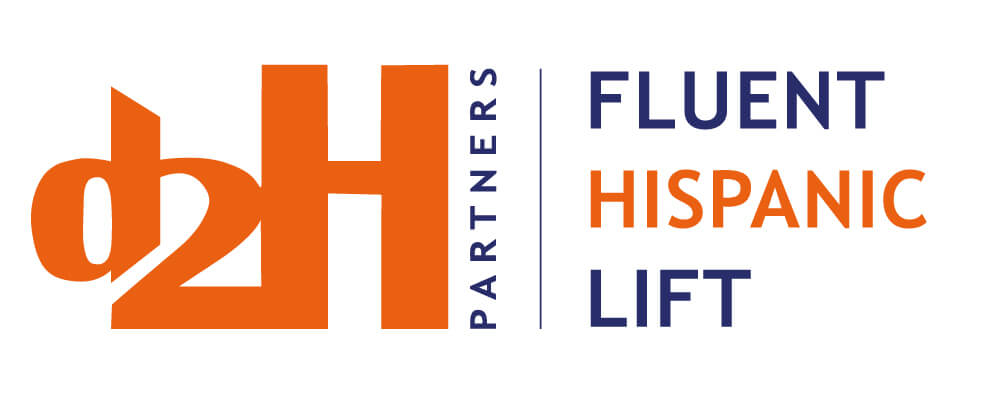The Unifying Power of Spanish
August 21, 2019 – How Important is Spanish Today Among U.S. Hispanics?
Depending upon who one listens to, Spanish is the most common unifier amongst U.S. Hispanics. Some would say that Spanish may be a factor that separates the different generations. The other side of that belief is that Spanish may also be a factor that separates us from non-Spanish speakers generationally. We would argue that the number of Spanish-speakers in America is growing in tandem with the number of English-Speaking Hispanics. In other words, neither trend is exclusive of the other.
Spanish Speakers Continue to Grow in U.S.
While we frequently read that fewer Hispanics are speaking Spanish as their primary language, the fact is that the absolute number of Spanish speakers continues to grow in the United States. 46MM Hispanics retain their native or maternal language, making the U.S. the third largest Spanish-speaking country in the world, according to Nielsen 2019 Universe Estimates. Only Mexico and Spain can boast more Spanish-speakers.
Further, what cannot be denied is the importance that Hispanics attach to speaking Spanish. In fact, there is a growing body of evidence indicating that the nearly all Latinos believe it is important that the next generation of Latinos in the U.S. speak Spanish.
Hispanic Marketers Don’t Operate in a Bubble
As Hispanic marketers, we have to be cognizant of the environment around us, as marketing does not operate in a bubble. In today’s polarized world, speaking Spanish has become a political act. Language, in and of itself, is not a political tool, much less a divisive one. In fact, and as the Roman historian Suetonius once said, “in a free state, language and thought must be free.”
We U.S. Hispanics have the privilege to live in a nation that has long welcomed immigrants and has grown thanks to its diversity. Freedom is not just political, personal or religious. In this country particularly, it also extends to the economy, best exemplified by its robust free market. If consumers can be best reached in a language other than English – be that Spanish, Polish, Korean or others – then as smart and successful marketers we should accept what the market demands. If Hispanic consumers choose Spanish-language programming and content, then we must respond in-kind, with authentic in-language marketing, advertising and experiential content.
Diversity and the process of acculturation, or the lack thereof, seem to be triggers in our cultural wars. Both have been at the core of the immigrant history of the United States. Hispanics are no different, except for our multi-trillion dollar market size, which has allowed us to sustain and indeed grow the use of Spanish through several generations.
The Spanish Speaking Consumer
Acculturation leads us into the discussion of the evolution of Spanish among U.S. Hispanics. This issue is existential for the ecosystem created by Spanish-speaking consumers and served by Hispanic agencies on behalf of our multiple clients. One can argue that you do not have to speak Spanish to consider yourself Latino; however, most Latinos feel that Spanish is becoming a more vital and important part of their identity, both as individuals and consumers.
That being said, how is Spanish spoken in the U.S.?
The way we speak Spanish reflects where we live in this country, where in Latin America (or Spain) we came from and, perhaps most importantly, how long we have been residing in the U.S. The regional differences, both regarding our countries of origin and where in the U.S. we live, are probably the main drivers in our use of Spanish. It is a well-known fact that there are differences among Spanish speakers, be they idiomatic, intonation or even vocabulary; nonetheless, we all understand one another. In fact, we probably spend a lot of time examining (and enjoying) the different words and expressions we use.
The Spanglish Effect
Another critical factor is the injection of English words into Spanish, which is commonly known as Spanglish. This takes many different forms, adopting a shortcut, such as “email” instead of the cumbersome “correo electrónico”. This is normally accepted by everyone, because it makes communication easier. In fact, many English technical terms are simply used in their native form, because Spanish lacks a direct translation.
What is less acceptable is the “Spanish-izing” of English words that have an easy and simple Spanish counterpart: “troca” for truck; the correct word is camión. “Carpeta” for carpet; the correct word is alfombra. In fact, “carpeta” is the translation of the word folder. This list is endless because it’s driven by the speakers’ lack of Spanish vocabulary, and their ability to make up hybrid words. Most native speakers find this custom almost offensive (even though we have all been guilty of doing it here in the U.S.), since if taken to the extreme, it can be the end of “correct” Spanish.
Authentic Spanish Advertising
In the end what matters is communication and understanding. As advertisers, it is our responsibility to speak directly and authentically so that consumers will not just comprehend our message but embrace it as well.
It has been said that the way that Spanish is evolving in the U.S. points to its future and strength, because it incorporates, celebrates and unites each of our different expressions into a common, nurturing language.
For more discussion about the evolution of Spanish as the language of Hispanic marketing, check out the infographic in our APPROACH section and vlog – Speaking2Hispanics here on our website, www.d2hispanic.com.
Patricia S. Testa – Managing Partner – d2H Partners, LLC – 2019
About d2H Partners – Los Angeles based full-service Hispanic Advertising Agency focused on D2C and B2B Spanish language campaigns targeting immigrant, first-generation and “billenial” Hispanics. d2H specializes in creating, adapting, and delivering targeted messages to Latinos to profitably enculturate your message, media and metrics.
